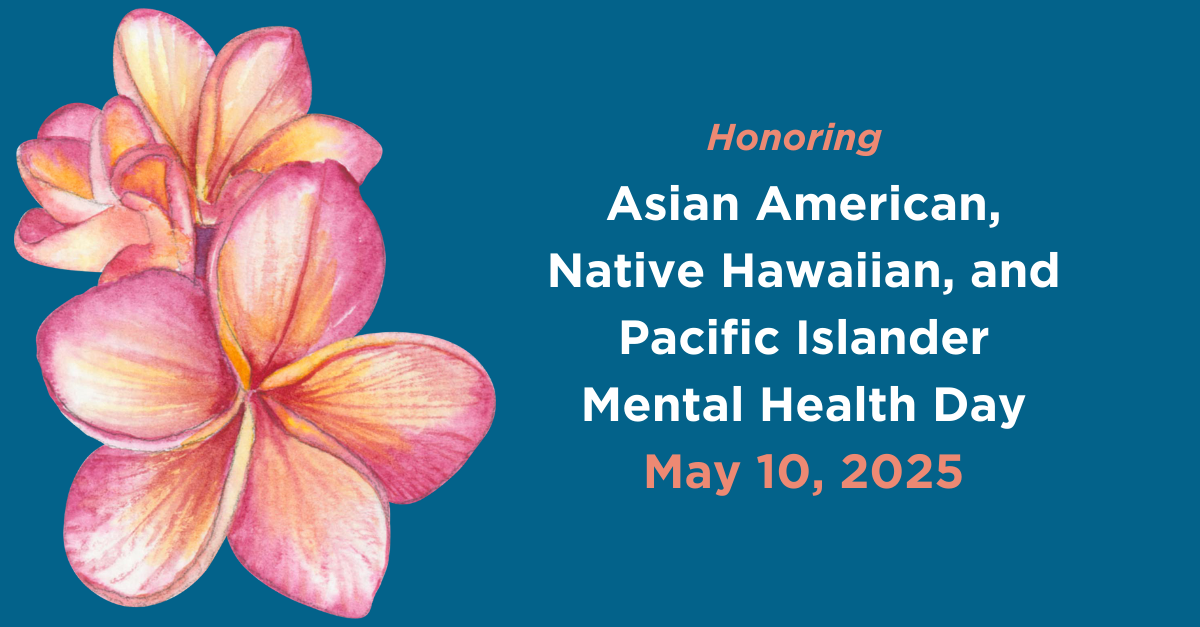Mental Health in the Asian American, Native Hawaiian, and Pacific Islander Communities

Hooper, Lundy & Bookman, P.C. is honored to celebrate May as both Asian Pacific American Heritage Month (APAHM) and Mental Health Awareness Month (MHAM). May 10 is also recognized as Asian American, Native Hawaiian, and Pacific Islander (AANHPI) Mental Health Day, which provides a unique opportunity to raise awareness of the challenges associated with mental health and to initiate dialogue that includes finding ways to best support these communities.
A Note on Data Disparity
AANHPI populations are diverse, originating from more than 50 countries, speaking more than 100 languages, and emigrating for a myriad of opportunities and/or due to a variety of geo-political reasons. Aggregated data for AANHPI as a whole fails to capture the significant variations among AANHPI subgroups including, among others, education level, income, English proficiency, and health outcomes.
In response to the unique challenges AANHPI face, especially in accessing and receiving healthcare services, there is a growing movement to disaggregate data, (1) treating Asian Americans and Native Hawaiian and Pacific Islanders (NHPI) as distinct in data collection; and (2) separating information based on ethnic subgroup, which can be a critical tool in better tailoring patient access to care, health services utilization, and diagnoses.
Asian Americans
Asian Americans are the least likely racial group in the United States to have a personal doctor and are less likely to report that a doctor has ever talked to them about mental health issues. It’s no surprise then, that Asian Americans also report the lowest rates of mental health treatment amongst ethnic groups that include Caucasian American, African American and Hispanic American populations.
The National Latino and Asian American Study reported that Asian Americans have a 17.30 percent overall lifetime rate of any psychiatric disorder and a 9.19 percent 12-month rate. According to the same study, only 8.6 percent of Asian Americans sought mental health services or resources, versus nearly 18 percent of the general American population. Among those with psychological disorders, only 28 percent of Asian Americans sought specialty mental health services compared to 54 percent of the general population.”
Suicide rates are a serious concern amongst Asian American youth populations. In recent research, Dr. Anthony Lam Bui reported a disturbing 125% increase in suicide over a 22-year period among female Asian American youth and a 72% increase in suicide among male Asian American youth, with Vietnamese American and Korean American youth having higher rates of suicide. According to a survey by The Trevor Project, which found that 40 percent of AANHPI LGBTQ youth had seriously considered suicide in the past year, those youth who experienced race-based discrimination or immigration-based discrimination reported significantly higher rates of attempting suicide.
Native Hawaiian and Pacific Islanders (“NHPI”)
A survey of more than 900 Native Hawaiians and Pacific Islander adults in California found that 1 in 3 NHPI adults reported needing mental health care in the previous 12 months for assistance with stress, depression, or emotions. In the same survey, 17% of NHPIs said they had delayed mental health care in the past year due to costs, cultural stigma, lack of insurance, lack of access and inability to take time away from work to receive care. A mere 26.8% of NHPI adults reported having sought mental health care at any point in their lifetimes. Based on the limited data available, the Substance Abuse and Mental Health Services Administration reported that suicide was the leading cause of death for NHPI ages 15 to 24 in 2019.
According to another study, health disparities increase significantly within the NHPI population depending on where someone resides. For example, the rate of uninsured NHPI living in Hawai‘i is half of the rate of those living on the U.S. mainland due to Hawai‘i’s eligibility levels for Medicaid coverage and mandated employer-provided health coverage. And for those NHPI living in the southern states, they are four times more likely to be uninsured than those in Hawai‘i.
The Future of Mental Health for AANHPI Populations
There are significant barriers AANHPI encounter in seeking mental health services. In addition to a lack of insurance, AANHPI may avoid seeking professional help because of feelings of discomfort due to, among other reasons, a language barrier, differences in religious and cultural values, the fact that their doctor does not share their same race or ethnicity, or because of past experiences in which medical professionals would discount their symptoms or fail to involve them in the decision-making process. Access may be further limited due to the distance of the healthcare facility or its location outside of trusted communities. Some studies have also demonstrated that AANHPI may choose to not seek services because mental health is a taboo conversation in their communities or would be considered admitting to weakness and therefore letting down their family’s expectations.
Mental health awareness is evolving within diverse Asian American, Native Hawaiian and Pacific Islander communities, particularly to treat trauma caused by immigration stress, racism and language barriers, patriarchally related family violence, COVID-19 hate crimes, economic struggles, and histories of war and occupation. Therapists and social workers trained to work with immigrants and culturally diverse groups are seeking to understand and treat post-traumatic stress disorder (PTSD) using cognitive behavioral therapy (CBT) geared especially toward trauma.
For more resources on AANHPI populations and mental health, including healthcare access, mental health trainings, peer-led wellness groups, suicide prevention and more, please visit Asian Mental Health Collective, Stop AAPI Hate, the American Foundation for Suicide Prevention, and Stephanie Foo’s website.